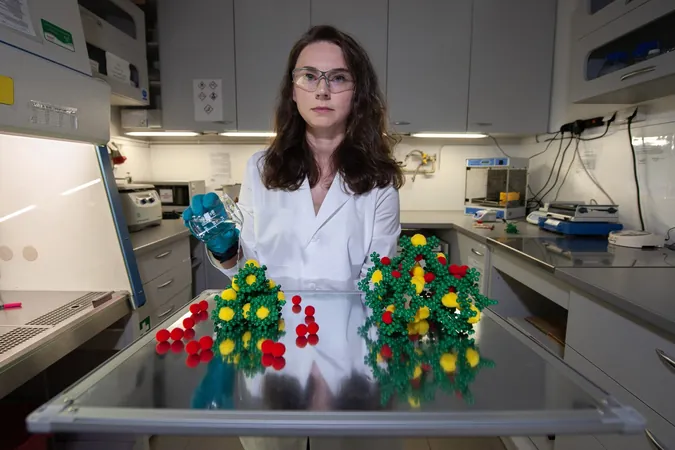
Breakthrough in Creating Soft, Robust Crystals with Extraordinary Gas Absorption Capabilities
2025-08-25
Author: Nur
Revolutionary Advances in Supramolecular Chemistry
Scientists have made a significant leap in the field of supramolecular chemistry, focusing on the self-assembly of complex chemical systems through donor-acceptor and noncovalent interactions. This cutting-edge research dives deep into the creation of advanced molecular porous materials (MPMs), which are highly adaptable and durable, showcasing unique properties that could lead to future technological advancements.
A New Method for Nanosized Clusters
A dynamic team from the Institute of Physical Chemistry and Warsaw University of Technology have, under the guidance of Prof. Janusz Lewiński, teamed up with Cambridge University's Prof. David Fairen-Jimenez to unveil an innovative technique that produces a nanosized Ni(II) hydroxyquinolinato-carbonato cluster. This breakthrough is detailed in their recent publication in the Journal of the American Chemical Society.
Transformative Crystallization Techniques
This unique decanuclear cluster showcases a remarkable ability to self-assemble into two distinct microporous frameworks, known as diamondoid WUT-1(Ni) and pyrite WUT-2(Ni), depending on crystallization conditions. Dr. Iwona Justyniak, a co-author of the study, mentions that the transition between these frameworks can be specifically activated through temperature changes or exposure to organic solvent vapors, making it easy to restore their crystalline forms.
Exceptional Stability and Gas Adsorption Properties
Both frameworks demonstrate impressive thermal and chemical stability in various conditions, particularly in air and water. Notably, WUT-1(Ni) shows outstanding gas uptake, surpassing its Zn(II) counterpart, making it one of the top performers for hydrogen storage among noncovalent microporous materials. Conversely, the ultramicroporous WUT-2(Ni) framework exhibits an exceptional ability to selectively absorb gases, particularly showing impressive CO2 affinity over CH4 and N2.
Unveiling the Importance of Metal Centers
The research highlights how the choice of metal centers in these isostructural clusters plays a critical role in their self-assembly and the resulting properties of the microporous frameworks. Ph.D. student Katarzyna Sołtys-Brzostek emphasizes that substituting Zn(II) with Ni(II) not only increased chemical stability but also significantly boosted the gas interaction capabilities of these frameworks.
The Future of Advanced Porous Materials
These groundbreaking findings pave the way for future advancements in the design of sophisticated porous materials, aiding in applications such as gas storage and separation technologies, environmental remediation, and more. The path forward looks promising as scientists build on these insights to further explore the potential of porous solids.


 Brasil (PT)
Brasil (PT)
 Canada (EN)
Canada (EN)
 Chile (ES)
Chile (ES)
 Česko (CS)
Česko (CS)
 대한민국 (KO)
대한민국 (KO)
 España (ES)
España (ES)
 France (FR)
France (FR)
 Hong Kong (EN)
Hong Kong (EN)
 Italia (IT)
Italia (IT)
 日本 (JA)
日本 (JA)
 Magyarország (HU)
Magyarország (HU)
 Norge (NO)
Norge (NO)
 Polska (PL)
Polska (PL)
 Schweiz (DE)
Schweiz (DE)
 Singapore (EN)
Singapore (EN)
 Sverige (SV)
Sverige (SV)
 Suomi (FI)
Suomi (FI)
 Türkiye (TR)
Türkiye (TR)
 الإمارات العربية المتحدة (AR)
الإمارات العربية المتحدة (AR)